Why does my Sharp LC-60LE757U LCD TV sometimes make a cracking sound?
- MMichael CoffeySep 14, 2025
The cracking sound your Sharp LCD TV sometimes makes is not a malfunction.
Why does my Sharp LC-60LE757U LCD TV sometimes make a cracking sound?
The cracking sound your Sharp LCD TV sometimes makes is not a malfunction.
How to troubleshoot no sound on Sharp LC-60LE757U LCD TV?
If there is no sound on your Sharp LCD TV, verify that the connection to other components is correct. Make sure the volume isn't too low and that you haven't pressed MUTE on the remote. Check the audio output of any connected external equipment to ensure the volume is not too low or muted. When external equipment is connected via an HDMI cable, you may need to configure the audio to be output through the HDMI cable. When audio is not output from external equipment connected to the PC IN or HDMI IN 2 terminal, check the "Audio Select" setting. Even when external equipment is connected using an HDMI-certified cable, an audio cable connection may be required depending on the type of equipment and the media being played back. When connecting a PC via an HDMI-certified cable, check if the audio...
| Screen Size | 60 inches |
|---|---|
| Display Technology | LCD |
| Resolution | 1920 x 1080 |
| Backlight Type | LED |
| Smart TV | Yes |
| Refresh Rate | 120 Hz |
| Connectivity | Wi-Fi, Ethernet |
| HDMI Ports | 4 |
| USB Ports | 2 |
| Audio Output | 20W |
User must read the manual before operating the equipment for safety.
Critical warnings and cautions to reduce risks of fire, electric shock, and ensure proper product usage.
FCC regulations, compliance statements, and other relevant regulatory information for the device.
Essential instructions for safe installation, operation, and maintenance of the television.
Safety advice on grounding, water, placement, ventilation, and heat.
Guidelines for safe servicing, replacement parts, and determining when service is needed.
Precautions for safe placement of televisions to prevent child injuries and hazards.
Safety advice for tuning in, TV placement, and safe use of furniture.
Guidelines for safely mounting the television on walls or ceilings by qualified personnel.
List of items included in the product package for initial setup and operation.
List of additional accessories available for purchase to enhance TV functionality.
Safety precautions and handling instructions for 3D glasses, including battery safety and viewing advice.
Step-by-step instructions for securely attaching the TV stand to the unit.
Essential steps for initial setup, including antenna connection, power, and remote.
Guidance on setting up and enjoying high-definition programming on the TV.
Information on connecting antenna cables for optimal picture reception.
Instructions for installing batteries and using the remote control unit effectively.
Labels and identifies the parts on the TV's front, side, and rear panels.
Labels the buttons and functions of the remote control unit for easy recognition.
Explains different methods for connecting external equipment to the TV.
Details on connecting video devices, PCs, and audio equipment to the TV.
Instructions on how to select and view input sources from connected external devices.
Instructions for connecting Blu-ray players, set-top boxes, and other devices using HDMI cables.
Guidance on connecting VCRs, game consoles, and set-top boxes using composite or component cables.
Steps for connecting AV amplifiers and audio systems for enhanced sound output.
Instructions for connecting a personal computer to the TV via HDMI or analog RGB cables.
Basic procedure for turning the TV on, off, or putting it into standby mode.
Guide for the first-time setup process, including channel tuning, language, and location.
Instructions for automatic channel searching and configuring network connections for internet access.
Steps to confirm setup and select input sources for connected equipment.
Explains direct operation of key TV functions like channel changing, volume, mute, and input selection.
Instructions for using SmartCentral, Flashback, Freeze, and Input selection features.
Details on adjusting audio modes, MTS/SAP, and setting the sleep timer.
Explains AV Mode for picture quality and digital broadcasting audio options.
Instructions for using closed captions and adjusting the screen's view mode for different content.
Explains how to navigate and operate the TV's on-screen display menus using the remote or control panel.
Clarifies the meaning of item states (blue, bracketed, white, gray) within the menu interface.
Lists the available picture adjustment options within the on-screen menu.
Lists the available audio adjustment options within the on-screen menu.
Lists the available system settings and options within the on-screen menu.
Lists initial setup, configuration, and information options available in the on-screen menu.
Detailed explanation of picture settings like OPC, Backlight, CMS, and Motion Enhancement.
Explains advanced picture adjustments such as Shutter Effect, Gamma, and Noise Reduction.
Details on audio settings like Surround Sound, Bass Enhancer, and Clear Voice for improved sound quality.
Options for managing power consumption, including Audio Only and Power Saving modes.
Explains System Options like View Mode and Terminal Settings for audio output and input skipping.
Configuration for input labels, HDMI, and individual settings like Secret Number and Parental Control.
Settings for Secret Number, Parental Control, V-Chip, and MPAA ratings for content filtering.
Information on TV parental guidelines, Canadian ratings, and content-based rating settings.
Details on identifying TV software version and performing manual or automatic updates.
Instructions for setting up Bluetooth devices and managing keyboard/mouse connections.
Steps for updating TV software using a USB memory device.
Procedure for updating TV software using a network connection.
Important warnings and precautions for viewing 3D content to prevent discomfort or injury.
Explains how to display 2D and 3D images using different methods like Side by Side or Top and Bottom.
Instructions on how to handle 3D signals, including automatic detection and manual switching.
Guides users on adjusting TV settings to enhance the 3D viewing experience, including 3D Setup options.
Specific instructions for handling and safely using 3D glasses, including lens care and usage precautions.
Instructions for connecting USB memory devices and hard drives for media playback.
Steps for connecting to a home network server to access media files.
Information on supported file formats for USB devices and home network servers.
Guide for navigating and selecting folders for photo, music, or video playback.
Instructions for playing back files from USB devices or home network servers.
Features for creating slide shows and accessing the USB menu for media management.
Details on operating music and video playback modes, including file selection and playback controls.
Explains the operation panels and controls for USB and Home Network playback.
Setup for DivX content and instructions for remote playback from portable devices or PCs.
Instructions for programming the remote control to operate connected AV equipment.
How to operate connected devices like STB, VCR, BD, or DVD players using the TV remote.
Overview of using AQUOS LINK to control HDMI-connected equipment with one remote.
Steps for setting up AQUOS LINK, including recorder selection and channel key control.
Details on Audio Return Channel, One Touch Playback/Recording, and the Link Operation Menu.
Explains device operation panels, playback lists, and various setup options within AQUOS LINK.
Instructions for connecting a smartphone using an MHL cable for viewing and playback.
How to adjust PC image position, sync, clock, and phase for optimal display.
Configuring audio input settings for PC connections via analog or HDMI.
Information on controlling the TV via PC and communication settings for IP and RS-232C.
Specifications for RS-232C communication, including command tables and compatibility charts.
Details on compatible PC resolutions and refresh rates for optimal display.
Step-by-step guide for setting up Internet access, including network and wireless configurations.
Instructions for network setup, connection tests, and interactive service settings.
Using online support and entering text via the software keyboard for internet services.
How to use the web browser, navigate pages, and utilize the toolbar functions.
Guidance on accessing web content, handling security warnings, and using bookmarks.
Configuring browser settings, cookies, and using keyboard/mouse for internet navigation.
Using internet applications, managing icons, and deactivating specific functions.
Legal notices regarding third-party content, services, and provider responsibilities.
Instructions for safely detaching the TV stand from the unit.
Guidelines for securely mounting the TV on a wall using an optional bracket.
Technical specifications and screw details for compatible wall mount kits.
Solutions for common problems like no power, unit operation, remote control issues, and picture problems.
Explains error codes and provides possible solutions for broadcast reception and audio format issues.
Information on software composition and how to access software license details.
Detailed technical specifications for various TV models, including LCD panel, resolution, and audio output.
Continued technical specifications for TV models, covering terminals, power, weight, and dimensions.
Details on Wi-Fi, Wi-Fi Protected Setup, FCC, and Bluetooth certifications for the TV.
Lists registered trademarks and logos associated with the product and its technologies.
Details the consumer limited warranty terms, coverage, exclusions, and how to obtain service.
Visual representation of the TV's dimensions and mounting hole locations for the LC-80LE857U model.
Visual representation of the TV's dimensions and mounting hole locations for LC-70LE857U and LC-60LE857U models.
Visual representation of the TV's dimensions and mounting hole locations for LC-70LE757U, LC-70LE755U, LC-70LE750U, LC-70C7500U models.
Visual representation of the TV's dimensions and mounting hole locations for LC-90LE657U, LC-80LE657U, LC-80LE650U, LC-80C6500U models.
Visual representation of the TV's dimensions and mounting hole locations for LC-70LE657U, LC-70LE655U, LC-70LE650U, LC-70C6500U models.
Visual representation of the TV's dimensions and mounting hole locations for LC-60LE657U, LC-60LE655U, LC-60LE650U, LC-60C6500U models.
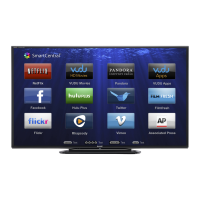
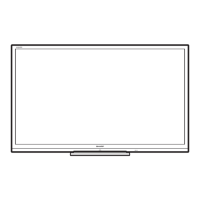
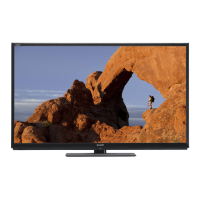
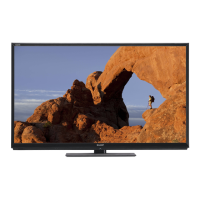

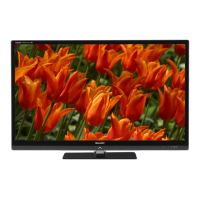

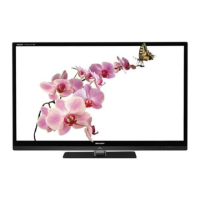

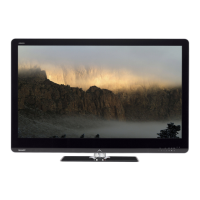
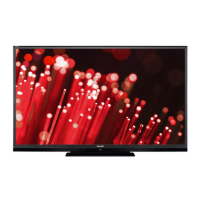

